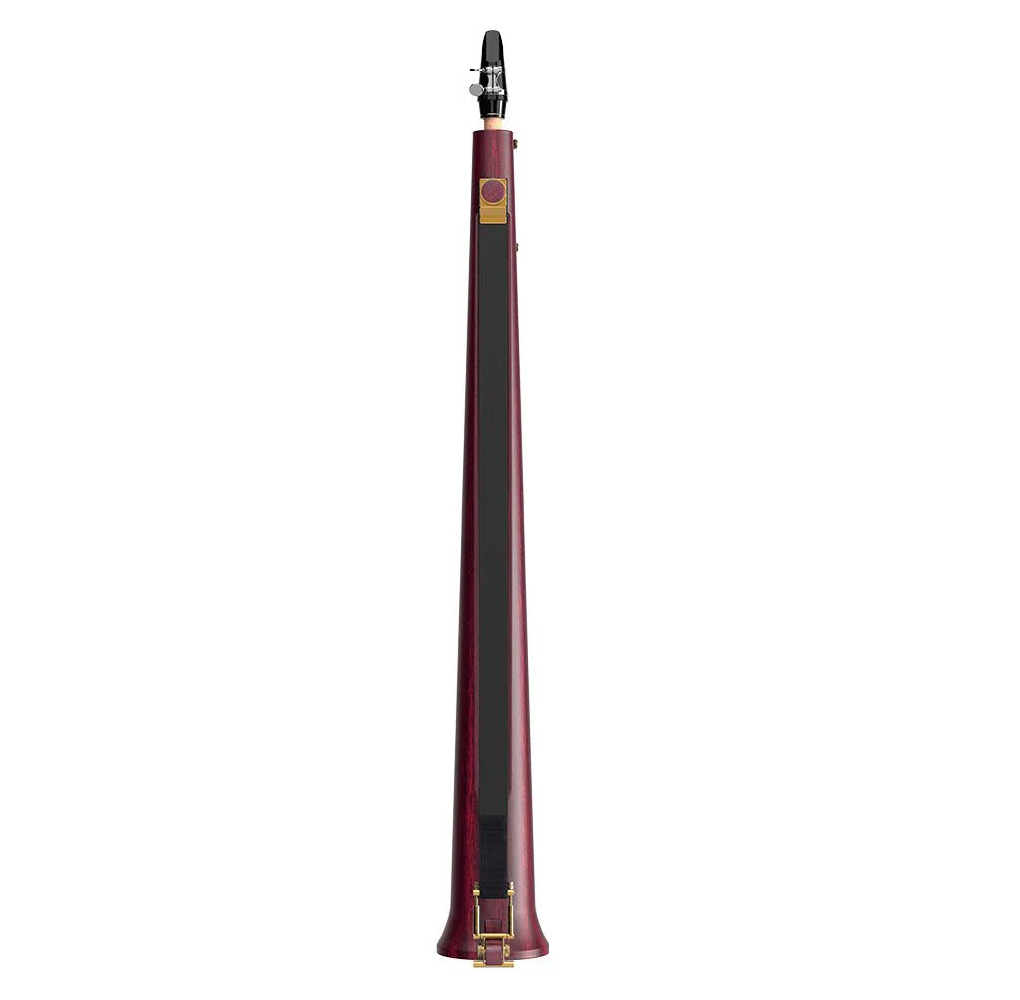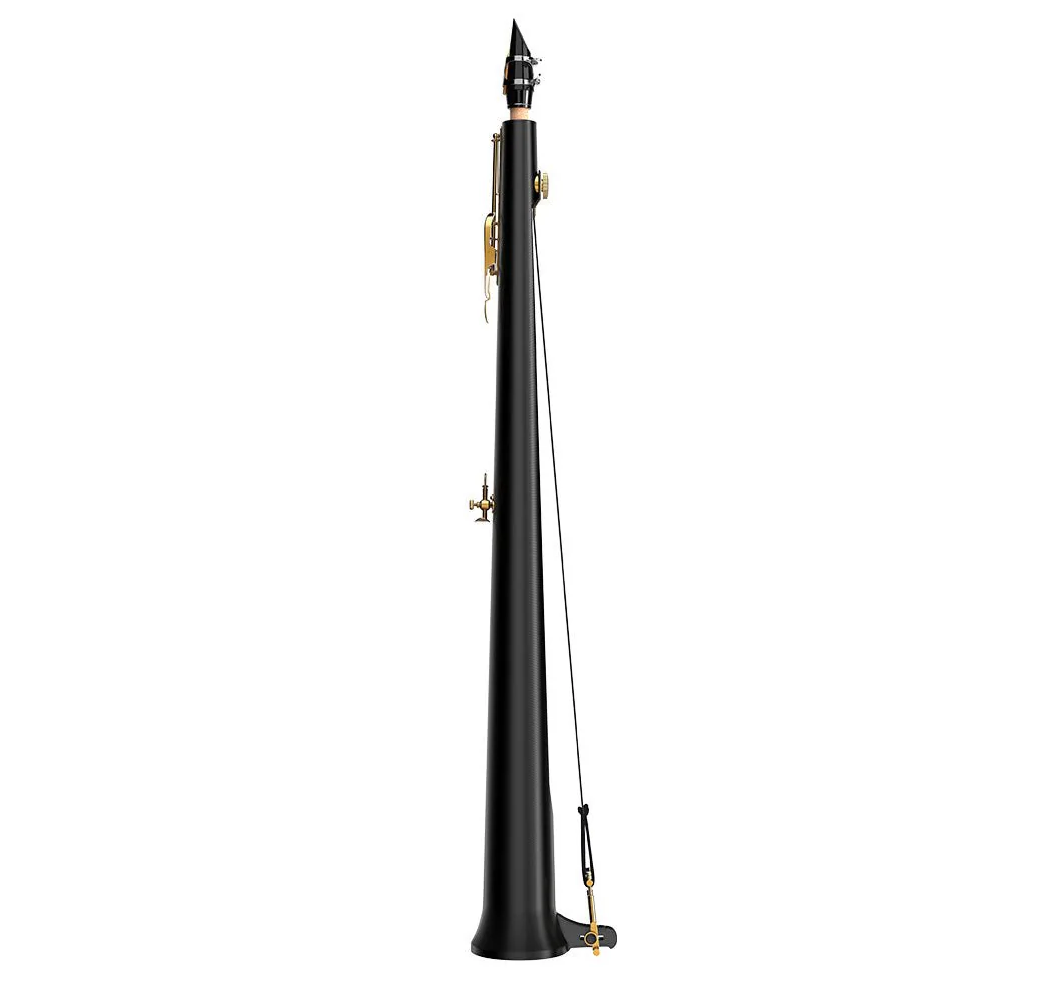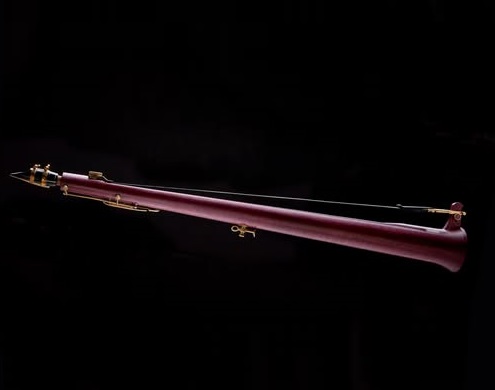Glissotar
Woodwinds
Europe
Between 1901 and present
Video
The Glissotar is a groundbreaking musical instrument that merges the expressive capabilities of string instruments with the tonal qualities of woodwinds. As the inaugural member of the Glissonic instrument family, it offers musicians unprecedented flexibility in pitch control and glissando techniques.
It is a woodwind instrument with a conical bore and a single reed mouthpiece, similar to that of a soprano saxophone. However, it distinguishes itself by employing a unique pitch control mechanism that eliminates traditional tone holes, allowing for continuous pitch variation.
History
The development of the Glissotar began in 2016 when Hungarian musician and inventor Dániel Váczi collaborated with designer Tóbiás Terebessy to explore new possibilities in woodwind instruments. Their goal was to create an instrument that could glide between pitches effortlessly, combining the sound of a reed instrument with the expressive intonation typical of string instruments. The first prototype was a simple bamboo tube with a slot and a fridge magnet attached to it, combined with a saxophone mouthpiece. This experiment confirmed the concept’s viability, leading to further refinements and the eventual creation of the Glissotar.
Development Timeline
Early prototypes used bamboo and fridge magnets to test the magnetic ribbon concept. By 2018, the first functional Glissotar emerged, refined through collaborations with instrument craftsmen. Historical precedents like Leonardo da Vinci’s slot-based recorder sketches and 20th-century slide saxophones informed its evolution.
Construction
Materials and Design
The premium Glissotar uses Amaranth (Purpleheart) wood for warmth, while the 3D-printed Glissotar Jam offers durability and brighter tones. Both share a brass neck, magnetic ribbon, and octave keys. The ribbon spans a longitudinal slot, allowing players to press or slide anywhere along its length to alter pitch.
Mechanical Components
A magnetized foil strip covers the slot, attracting a movable ribbon. Two octave keys assist in register shifts, and the right-hand thumb rest stabilizes finger positioning. The instrument’s range spans 2.5 octaves (Low Ab to High Db) in concert pitch.
Types and Features
Two primary models exist: the Purpleheart Glissotar, prized for its rich wooden resonance, and the Glissotar Jam, a 3D-printed variant resistant to humidity. Both share identical bore dimensions and mechanics but differ in material aesthetics and tonal color.
- Continuous pitch control via magnetic ribbon.
- Microtonal and glissando capabilities.
- Compatibility with soprano sax mouthpieces.
- Two octave keys for register shifts.
- Durable 3D-printed or warm wooden construction.
- Unique effects like ribbon plucking or “musical saw” sounds.
Construction
The Glissotar features a longitudinal slot along its tube, covered by a magnetic strip instead of traditional tone holes. This design allows for smooth pitch changes, as the player can press the magnetic strip at any point to produce any pitch within a continuous range. The instrument is made of Amaranth, an elegant, naturally purple wood, and has a range of 2.5 octaves with two octave keys. It can be used with a soprano saxophone mouthpiece.
The Glissotar combines elements of the Hungarian tárogató and the soprano saxophone while introducing a unique system for producing glissando throughout its range. This fusion results in an instrument that offers both the tonal warmth of traditional woodwinds and the expressive pitch control of string instruments.
Sound Production
Sound is produced on the Glissotar by blowing into the single reed mouthpiece, causing the reed to vibrate and generate sound waves within the conical bore. The unique magnetic strip mechanism allows for continuous pitch variation, enabling smooth transitions between notes and the execution of complex glissando techniques.
Playing Methods
Fingering Techniques
Players use eight fingers to press or slide along the ribbon, with chromatic notes achievable in hand positions. Unlike traditional woodwinds, finger movements resemble string-instrument shifting, requiring muscle memory retraining.
Expressive Techniques
Glissandi dominate, but trills, tremolos, and microtonal bends are also possible. Advanced players exploit unsecured ribbon segments for percussive effects or pitch bends exceeding two octaves.
Roles in Music
The Glissotar’s unique capabilities make it suitable for a wide range of musical genres, from classical to modern electronic music. Its ability to produce smooth glissandos and microtonal variations offers composers and performers new avenues for musical expression. The instrument has been showcased in various performances, demonstrating its versatility and potential to enrich contemporary music.
As a modern innovation, the Glissotar represents a significant advancement in wind instrument design. It reflects a growing interest in expanding the expressive capabilities of traditional instruments and exploring new sonic possibilities. The Glissotar has garnered attention in the music community, winning the First Prize and the People’s Choice Award at the Guthman Musical Instrument Competition in Atlanta in 2022.
FAQ
What is the Glissotar made of?
The Glissotar is primarily made of wood, with a special smooth bore design. It has a flexible inner lining, allowing for seamless pitch transitions. The instrument also includes a mouthpiece similar to a saxophone or clarinet. These materials contribute to its unique gliding sound.
Who uses the Glissotar?
The Glissotar is used by experimental musicians, jazz artists, and contemporary composers. It is especially favored by those exploring microtonal music and gliding notes. Wind instrument players often adapt to it due to its saxophone-like embouchure. It is gaining popularity in avant-garde music circles.
What is the Glissotar used for?
The Glissotar is used for producing smooth, continuous glissando effects. It is ideal for experimental music, contemporary compositions, and microtonal explorations. Musicians use it to create expressive and fluid melodies. Its unique capabilities make it suitable for fusion and free improvisation.
 Links
Links
References
Other Instrument
Categories




















